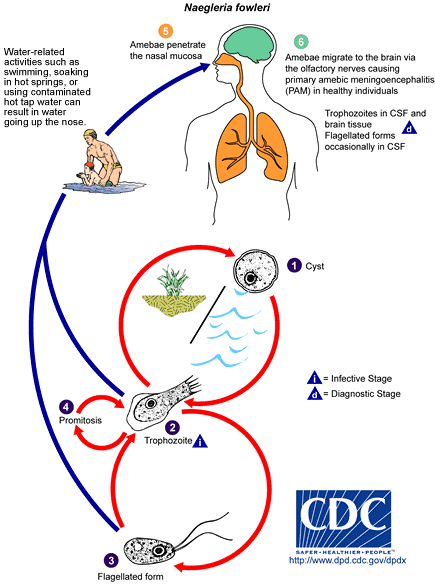1. NISAR Satellite: A Joint Earth Observation Mission
NISAR stands for NASA-ISRO Synthetic Aperture Radar. It’s a Low Earth Orbit Observatory jointly developed by the Indian Space Research Organisation (ISRO) and the National Aeronautics and Space Administration (NASA).
Key Features:
- Dual-frequency radar: This is unique as it will use both L-band and S-band radar to provide a more comprehensive view of Earth’s surface.
- High resolution: It can capture changes as small as one centimetre, making it highly effective for monitoring various Earth processes.
- Global coverage: NISAR will map the entire Earth every 12 days, providing valuable data for scientific research and applications.
Applications of NISAR
NISAR’s advanced capabilities have a wide range of applications, including:
- Climate Change: Monitoring ice mass loss, sea level rise, and changes in vegetation cover.
- Disaster Management: Providing early warning systems for earthquakes, tsunamis, and landslides.
- Agriculture: Assessing crop health, monitoring soil moisture, and detecting land use changes.
- Oceanography: Studying ocean currents, waves, and sea ice.
- Geology: Mapping tectonic plates and volcanic activity.
By providing detailed and frequent observations of Earth’s surface, NISAR will contribute significantly to our understanding of global environmental changes and support decision-making in various sectors.
Current Status of NISAR
As of now, NISAR has faced some delays due to technical challenges. The satellite was originally scheduled for launch in 2023, but this has been pushed back. ISRO and NASA are working diligently to resolve the issues and prepare for the launch.
2. Mining and Power of States: A Breakdown
CONTEXT: The Supreme Court’s Landmark Ruling: The recent Supreme Court judgment has significantly altered the landscape of mining in India by clarifying the powers of the Centre and states in this sector.
Key Points from Judgement:
- Royalty is not a tax: The court categorically stated that royalty is a fee paid for the right to use a product, distinct from a tax levied for public purposes.
- States have the power to tax mining: The judgment empowers states to impose taxes on mining activities and the land used for these purposes, beyond the royalties collected.
- MMDRA does not limit state’s taxing power: The Mines and Minerals (Development and Regulation) Act, 1957 (MMDRA), primarily regulates mining activities and does not restrict the states’ ability to levy taxes..
| The Mines and Minerals (Development and Regulation) Act, 1957 (MMDRA) | |
Key Features of the MMDRA:
| 1. Grant of mining leases: The Central and state governments have the power to grant mining leases. 2. Royalty payments: Leaseholders are required to pay royalties to the government for extracting minerals. 3. Conservation and environmental protection: The Act emphasizes the need for sustainable mining practices and environmental protection. 4. Dispute resolution: Provides a mechanism for resolving disputes related to mining operations. | |
Role of States in Mining
|
ü Granting mining leases: State governments, in consultation with the Central government, grant mining leases. ü Collection of royalties: States are entitled to collect royalties from mining leaseholders. ü Imposition of taxes: The Supreme Court’s ruling allows states to levy additional taxes on mining activities and mineral-bearing lands. ü Regulation of mining: States have the authority to regulate mining operations within their territories, subject to the overall framework of the MMDRA.
| |
Implications of the Supreme Court Judgment
| The judgment is expected to have far-reaching implications for the mining sector:
1. Increased revenue for states: States, especially mineral-rich ones, can expect to generate additional revenue through taxes. 2. Potential for fiscal federalism: The decision strengthens fiscal federalism by granting more financial autonomy to states. 3. Complexities in taxation: Implementing new taxes and ensuring compliance may pose challenges for both states and mining companies. 4. Impact on mining costs: Increased tax burden could potentially affect the overall cost of mining operations. | |
3. Brain-Eating Amoeba: A Public Health Concern
CONTEXT: A Kerala teen battled brain eating amoeba disease and survived
What is Primary Amoebic Meningoencephalitis (PAM)?
- PAM is a rare but fatal brain infection caused by a microscopic amoeba called Naegleria fowleri. Often referred to as the “brain-eating amoeba,” it is found in warm freshwater bodies like lakes, rivers, and hot springs.
How does infection occur?
- The amoeba enters the human body through the nose, typically while swimming, diving, or engaging in other water-related activities. Once inside, it travels to the brain and causes severe inflammation and destruction of brain tissue.
Symptoms and Treatment:
- Symptoms of PAM include headache, fever, nausea, vomiting, stiff neck, confusion, seizures, hallucinations, and coma. The disease progresses rapidly, often leading to death within a week of symptom onset.
- Treatment options are limited and often ineffective. While there have been rare cases of survival, the mortality rate is extremely high.
Public Health Implications:
The increasing number of PAM cases in certain regions, like Kerala, highlights the need for:
- Public awareness: Educating people about the risks associated with swimming in warm freshwater bodies.
- Early detection: Developing rapid diagnostic tests for PAM.
- Research: Investing in research to find effective treatments and preventive measures.
- Water management: Implementing water quality monitoring and treatment protocols in public water bodies.
4. Renaming of Halls at Rashtrapati Bhavan: A Deeper Look
CONTEXT: Renaming two halls in Rashtrapati Bhawan. (For GS IV and Essay)
Key Points
| 1. Symbolism of Change: The renaming of Durbar Hall to Ganatantra Mandap and Ashok Hall to Ashok Mandap signifies a deliberate shift away from colonial remnants and towards a more indigenous and republican identity.
2. Emphasis on Indian Heritage: The choice of ‘Ganatantra Mandap’ underlines the deep roots of democratic principles in Indian civilization, while ‘Ashok Mandap’ highlights the emperor’s symbol of peace and unity, aligning with the nation’s ethos.
3. Removal of Colonial Vestiges: The term ‘Durbar’ is associated with imperial courts, reflecting a bygone era. Replacing it with ‘Ganatantra Mandap’ is seen as a corrective measure to decolonize public spaces.
4. Language and Identity: The move towards Sanskrit-derived names is part of a broader trend to promote Indian languages and cultural heritage.
5. Political Undercurrents: The renaming has sparked political discourse, with the opposition criticizing it as a symbolic gesture without addressing substantive issues.
|
Other Recent Renamings
|
· Cities and States: Several cities and states have been renamed to reflect historical or cultural identities. Examples include Allahabad to Prayagraj, Mughalsarai to Pandit Deen Dayal Upadhyay Junction, and Faizabad to Ayodhya. · Institutions: Educational institutions, airports, and other public places have undergone name changes. For instance, Delhi’s Aurangzeb Road was renamed Dr. APJ Abdul Kalam Road. · Historical Figures: There has been a push to rename places associated with controversial historical figures.
|
Ethical Considerations
|
A. Respect for History: While acknowledging the need for change, it’s essential to consider the historical context and avoid erasing or distorting the past. B. Inclusivity: Renaming should be a consultative process involving diverse stakeholders to ensure that it reflects the aspirations of the entire community. C. Substance over Symbolism: While symbolic gestures are important, they should be accompanied by concrete actions to address underlying issues such as social inequality and economic disparities. |




